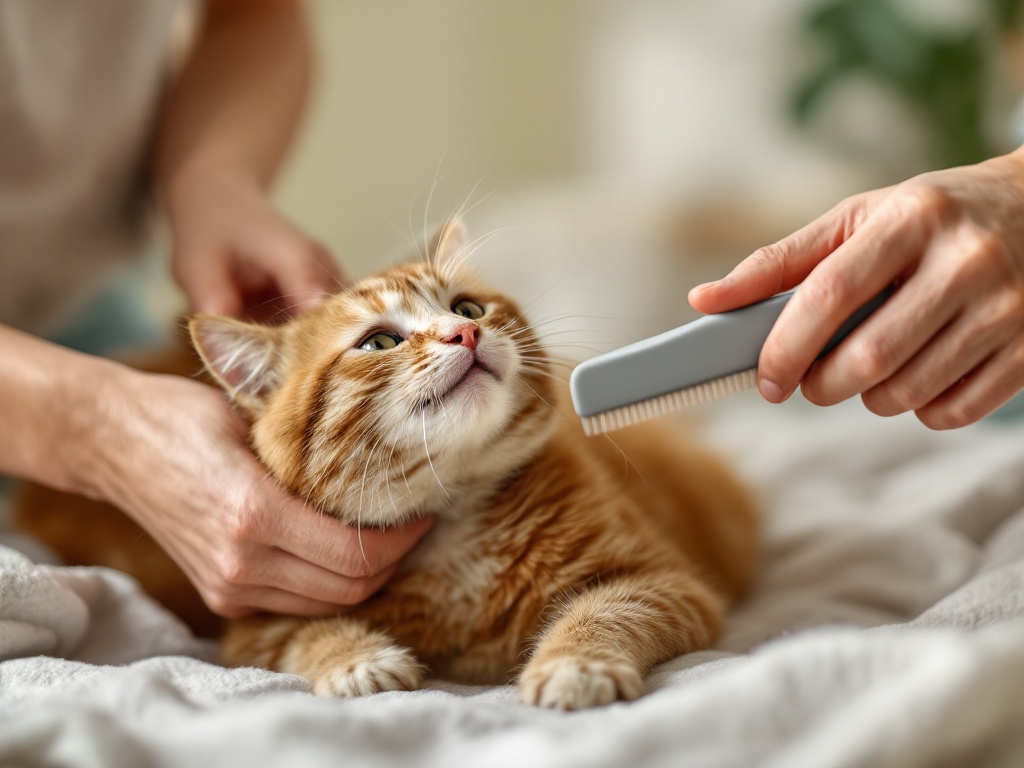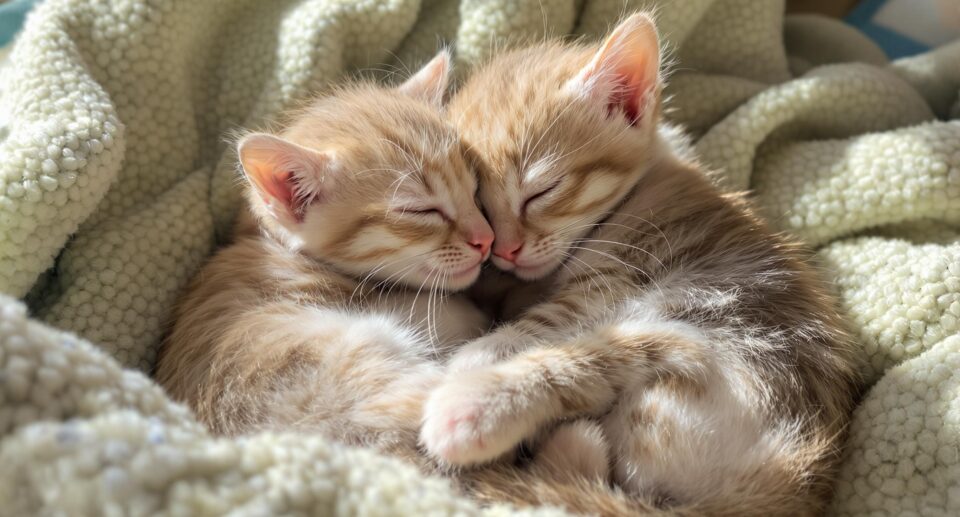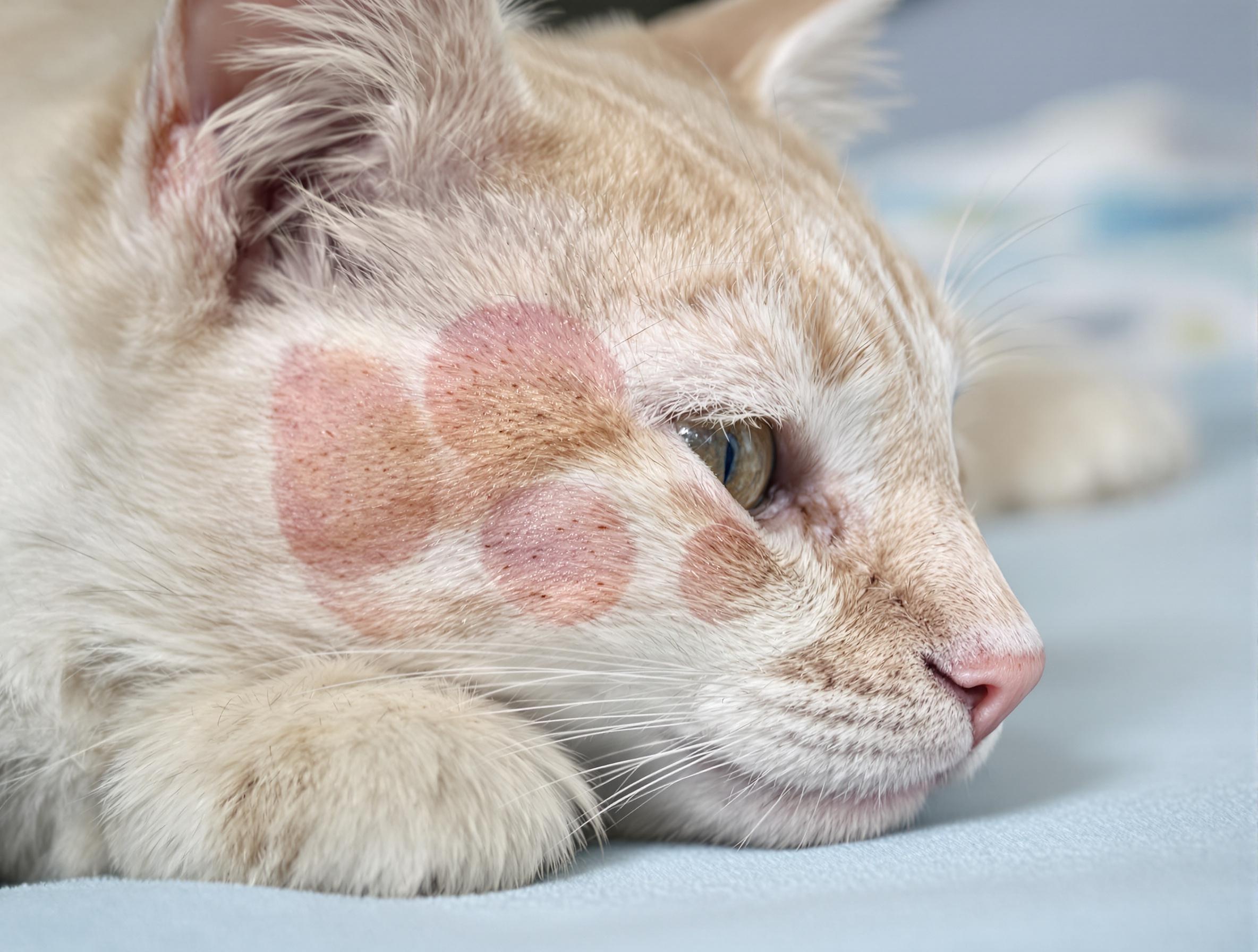Proven Methods to Prevent Fleas on Your Cat

Key takeaways:
- Consistent flea prevention is crucial to safeguarding your cat’s health and comfort. Monthly treatments are recommended, even during winter months.
- Creating a clean home environment is recommended as basic care, along with some form of monthly flea treatments.
- Reaching out to a veterinarian is recommended before you test out any flea treatment for your cat.
It’s a universal truth among pet owners that nobody wants their pet to get fleas. Thankfully, it’s easily preventable—or treatable if your cat already has fleas. Preventing fleas on your cat involves a thoughtful combination of regular grooming, proper medication, and environmental care. The right approach will keep your feline friend purring happily, flea-free.
At PetHealthMD, we understand the care and love you give your feline companion. Our guides and articles are here to support you on your journey. Always consult your veterinarian to create the best care plan for your cat.
Flea Prevention and Treatment Options for Your Cat
When it comes to protecting your cat from fleas, the best approach is a solid prevention plan. While keeping your home clean and using natural deterrents can help, treatment-based prevention has proven to be the most resilient against fleas. Here are some effective options:
1. Topical Spot-On Treatments
These are among the most popular flea prevention methods. You apply these liquid medications directly to your cat’s skin, usually between the shoulder blades, where your cat can’t lick them off. The medication spreads through the skin’s oils and kills fleas on contact.
- How it works: Absorbs into the skin and provides month-long protection.
- Best for: Cat parents looking for a simple, once-a-month application.
Learn more about topical flea treatments for cats.
2. Oral Flea Medications
Oral flea treatments are ideal if you prefer to avoid topical applications. These pills or chews work by attacking fleas from the inside out. Some begin killing fleas within hours, offering quick relief.
- How it works: Medication enters the bloodstream and kills fleas when they bite.
- Best for: Cats that tolerate pills well or have sensitive skin.
3. Flea Collars
Modern flea collars have improved in comfort and effectiveness, offering long-lasting protection with minimal odor. Many release active ingredients gradually for continuous protection over several months.
- How it works: Slowly releases flea-killing ingredients into the skin and coat.
- Best for: Low-maintenance, long-term prevention.
Explore our selection of flea collars for cats.
4. Flea Shampoos and Dips
These are great for eliminating active infestations, though they don’t provide long-term protection. They kill fleas on contact but won’t prevent new ones from appearing.
- How it works: Lathers into the fur and kills fleas during the bath.
- Best for: Immediate relief, especially during heavy infestations.
5. Flea Sprays
Flea sprays are versatile, as they can be used on both your cat and their bedding. Some kill adult fleas, while others target eggs and larvae.
- How it works: Spray directly onto fur and surrounding areas.
- Best for: Multi-pet households or added protection alongside another treatment.
Check out flea sprays to add another layer of protection.
6. Injectable Flea Control
Available through veterinarians, injectable treatments prevent flea eggs from hatching. They are ideal for cats that need long-term protection without monthly applications.
- How it works: Prevents fleas from reproducing but does not kill adults.
- Best for: Cats needing consistent, extended protection.
Always consult your veterinarian before starting any flea prevention treatment to determine which is safest and most effective for your cat.

Natural Ways to Prevent Fleas on Cats
Natural flea prevention begins right in your home, where daily habits create a comfortable, pest-free environment for your cat.
- Vacuum daily, especially in carpeted areas and under furniture where your cat naps.
- Dispose of vacuum contents in an outdoor bin to avoid eggs hatching inside.
- Use natural deterrents like cedar chips near resting areas.
- Wash bedding weekly in hot water (140°F/60°C) and tumble dry for 10 minutes.
- Groom your cat twice weekly with a fine-toothed flea comb, focusing on the neck, tail base, and belly.
Always check with your veterinarian before starting new flea prevention methods.
Commonly Asked Flea Treatment Questions
How often should I apply flea treatments to my cat?
Most cat parents use monthly spot-on treatments or oral medications for reliable protection. Ask your veterinarian which option best suits your cat’s needs.
Should I stop flea treatments during winter months?
No—continue treatments year-round. Fleas thrive indoors even in cold weather. Stopping treatments can lead to sudden infestations.
How do I manage flea prevention in a multi-cat household?
Treat all cats in your home on the same day and keep them separated until treatments dry. Mark your calendar to stay consistent.
What factors affect my cat’s flea treatment schedule?
Your cat’s lifestyle plays a key role. Outdoor cats and multi-pet homes require stricter schedules, while indoor cats still need regular protection. Climate and health also matter.
Recognize and Respond to Flea Signs Early
Despite your best efforts, fleas can still appear. Early detection helps prevent larger infestations. Watch for scratching around the head and neck, black specks in fur (flea dirt), or restlessness. Severe cases may cause pale gums or lethargy, especially in kittens.
If you notice these symptoms, contact your veterinarian right away.
For more information, explore our cat flea and tick treatments to find vet-approved solutions for a happy, flea-free cat.





